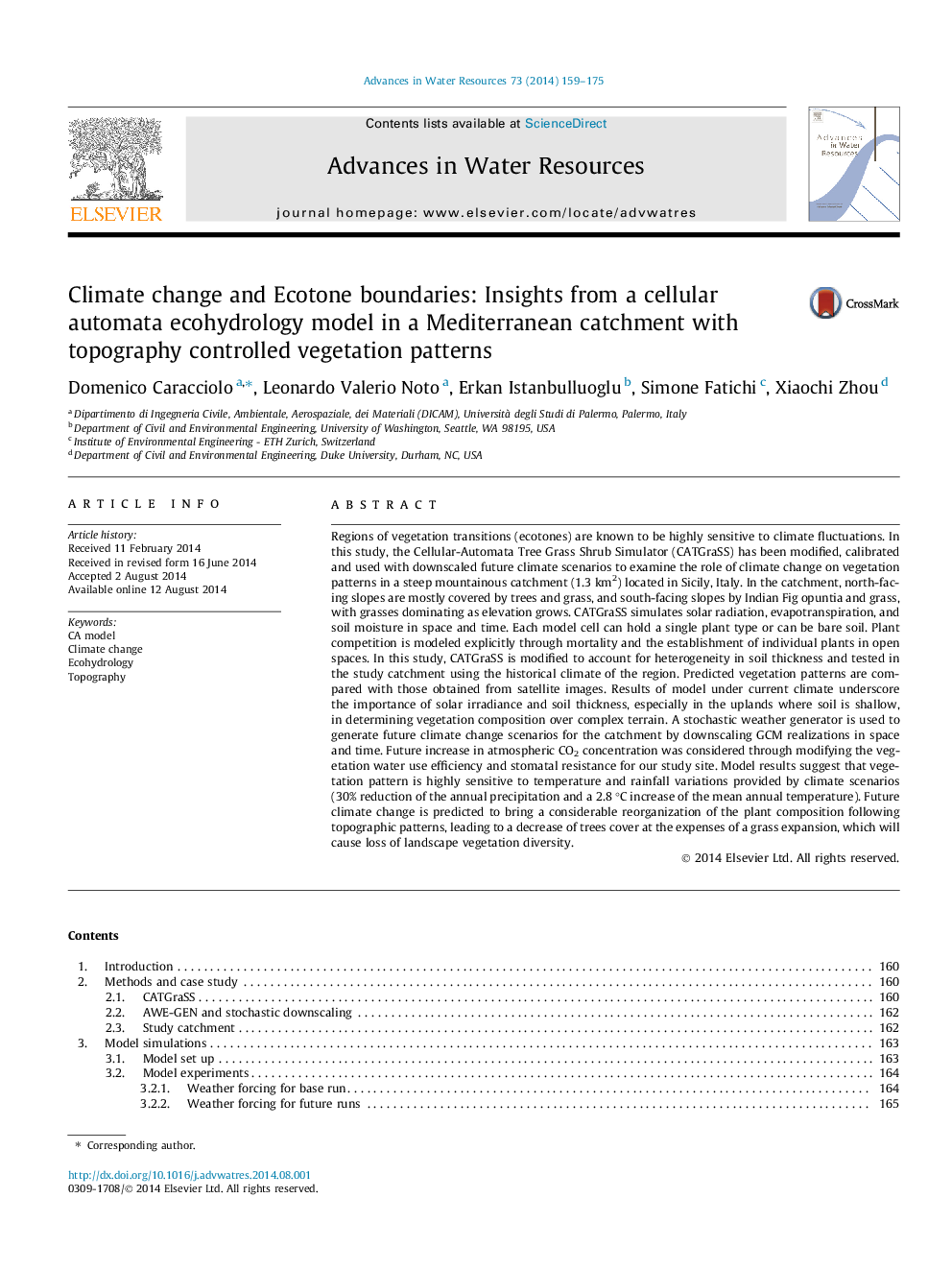| کد مقاله | کد نشریه | سال انتشار | مقاله انگلیسی | نسخه تمام متن |
|---|---|---|---|---|
| 4525473 | 1625636 | 2014 | 17 صفحه PDF | دانلود رایگان |

• This study is the first application of a CA model of vegetation with future climate.
• CATGraSS models the vegetation spatial dynamics under current and future climates.
• CATGraSS is modified to account for heterogeneity in soil thickness.
• A stochastic weather generator is used to generate future climate change scenarios.
• Future climate change is predicted to bring a reorganization of plant composition.
Regions of vegetation transitions (ecotones) are known to be highly sensitive to climate fluctuations. In this study, the Cellular-Automata Tree Grass Shrub Simulator (CATGraSS) has been modified, calibrated and used with downscaled future climate scenarios to examine the role of climate change on vegetation patterns in a steep mountainous catchment (1.3 km2) located in Sicily, Italy. In the catchment, north-facing slopes are mostly covered by trees and grass, and south-facing slopes by Indian Fig opuntia and grass, with grasses dominating as elevation grows. CATGraSS simulates solar radiation, evapotranspiration, and soil moisture in space and time. Each model cell can hold a single plant type or can be bare soil. Plant competition is modeled explicitly through mortality and the establishment of individual plants in open spaces. In this study, CATGraSS is modified to account for heterogeneity in soil thickness and tested in the study catchment using the historical climate of the region. Predicted vegetation patterns are compared with those obtained from satellite images. Results of model under current climate underscore the importance of solar irradiance and soil thickness, especially in the uplands where soil is shallow, in determining vegetation composition over complex terrain. A stochastic weather generator is used to generate future climate change scenarios for the catchment by downscaling GCM realizations in space and time. Future increase in atmospheric CO2 concentration was considered through modifying the vegetation water use efficiency and stomatal resistance for our study site. Model results suggest that vegetation pattern is highly sensitive to temperature and rainfall variations provided by climate scenarios (30% reduction of the annual precipitation and a 2.8 °C increase of the mean annual temperature). Future climate change is predicted to bring a considerable reorganization of the plant composition following topographic patterns, leading to a decrease of trees cover at the expenses of a grass expansion, which will cause loss of landscape vegetation diversity.
Journal: Advances in Water Resources - Volume 73, November 2014, Pages 159–175